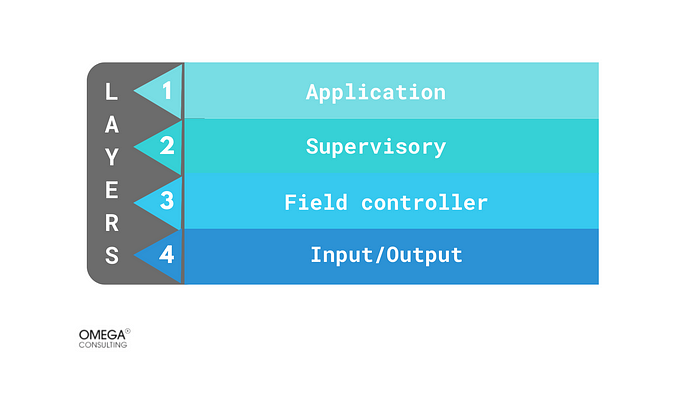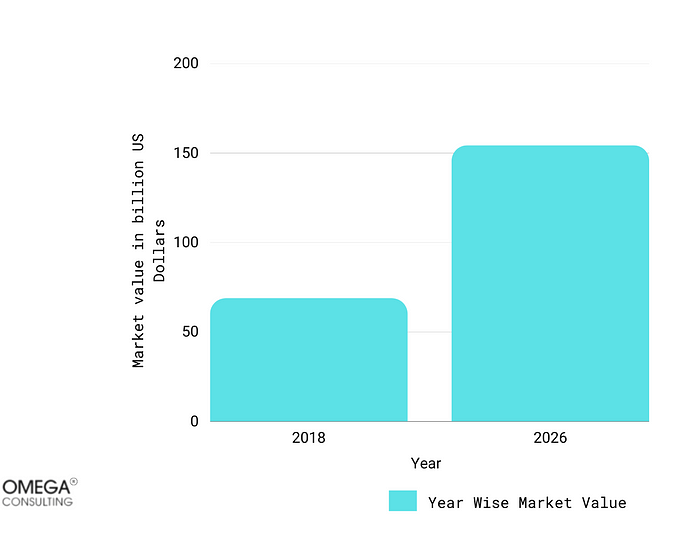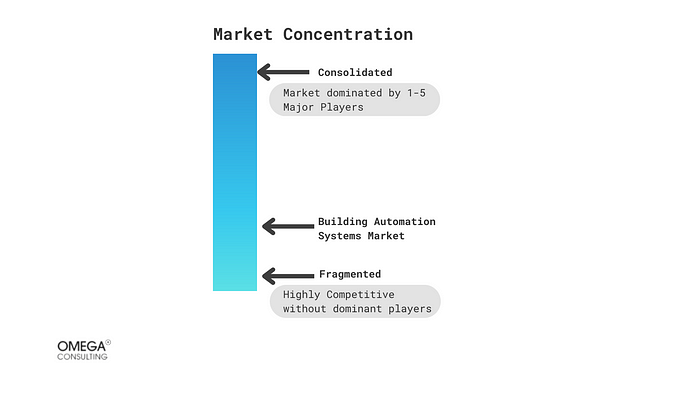- Industries
Industries
- Functions
Functions
- Insights
Insights
- Careers
Careers
- About Us
- Technology
- By Omega Team

What is Building Automation?
Building automation uses automation and control systems to monitor and control building-wide systems, including HVAC, lighting, alarms, security access, and surveillance cameras. A smart building is created by integrating these systems into a single IT-managed network infrastructure.How does Building automation work?
The purpose of building automation systems is to allow the building’s systems to function automatically and without human intervention. Typically, they are utilized in installations where the occupant is absent or interacting with the machinery via digital interface or voice command. In the absence of a human, a building automation system can manage temperature, illumination, HVAC, HVAC controls, and other safety-related functions. Building automation systems are intended to make occupants’ lives simpler. Elevators, illumination, heating, ventilation, and air conditioning may be present, but fire protection, security, access control, etc., may also be present. These systems monitor the condition of facilities to facilitate prompt maintenance.Building automation systems function by interconnecting the electrical, thermal, and geographic aspects of a structure. This is then controlled from a central location by an automated system that relies on a few environmental sensors and what it has learned about its surroundings. The automation system may include additional functions, such as booking individuals who need to enter or depart the building or administering a reception desk for guests. The building automation system regulates energy, climate, and safety. In this system, computers manage the illumination, heating, and conditioning systems, security cameras, and more. The HVAC system, or Heating, Ventilation, and Air Conditioning, is the most important aspect of building automation. This coordinates the temperature of the building space according to the preferences.
Types of Building Automation
Advanced Building Management Systems (ABMS)The ABMS is the most recent building management system available. ABMS is typically more expensive, but its sophisticated features facilitate operation. They enable remote management of all aspects of the building, granting users the freedom to be anywhere while still allowing them to control and monitor their facilities. Additionally, ABMS can reduce operating costs, enhance security, and maximize performance.
Local Automation Systems (LAS)
LAS is regarded as the most cost-effective option, which is why it is typically utilized for projects requiring rapid response and high precision. Local Automation Systems (LAS) facilitate the management of controls within the automation section. They are able to monitor a variety of business aspects, including the amount of energy consumption, HVAC systems, and monitoring CO2 levels. The system operates with energy efficiency and air quality by monitoring the energy required and how it is used to deliver fresh, pure air and maintain the optimum levels. In other words, LAS can significantly enhance the neighboring structures from both a cost-savings and health perspective.
Supervisory Control And Data Acquisition System (SCADA)
A building is regulated, monitored, and automated by a Supervisory Control And Data Acquisition System. SCADA provides access to a building’s power, lighting, security, and other systems via data-link technology. SCADA systems are generally reliable because their sensors and controllers can be monitored continuously, 24 hours a day, seven days a week. Depending on the need, high-end systems can provide heating and ventilation, with the ability to turn certain controls on or off.
Building Automation Architecture
The purpose of the building automation system is to control environmental conditions via a centralized user interface. To accomplish this, the BAS requires the installation of a network of field devices and mechanical actuators throughout the facility, controlled by a central controller. Communication between the controller and field devices, and mechanical actuators is a significant factor.The architecture of the building automation system consists of four layers, each of which performs a distinct function for the successful operation of the BAS. Understanding these layers enables various manufacturers to follow the same protocol when creating devices, allowing them to communicate without difficulty.
The building automation system’s architecture is based on the seven-layer OSI paradigm. Three of the seven layers at the top are combined to form the application layer. The final two layers are merged to form the input/output layer, which is a single layer.
As stated, there are four layers to which specific functions are allotted in a building automation system. Changing the function of a layer is technically impossible. Not adhering to the standards risks the incompatibility of their components with global building automation systems. The four layers are as follows.
Application Layer
The application layer serves as an interface between the BAS ( Building Automation System) application software and the network. The application layer facilitates data exchange between the application and the network.
The application layer defines a set of activation and deactivation criteria for BAS objects. Additionally, some properties provide information about an object’s pertinent parameters. A BAS object, like an air handler, represents a tangible quantity. As part of performing an action, an object activates the relevant parameter, such as a control valve or variable frequency drive (VFD) for an operational fan. This layer contains the user interface, which is the mechanism through which operators interact with and control the BAS.
Supervisory Layer
The supervisory layer comprises hardware and software and specifies the architecture’s message delivery. The software component represents the messages or signals conveying status or value information, such as device temperature and current fan speed. The hardware component represents the medium or carrier of data transmission between these devices, as there are various forms of standardized media. This section is necessary, as each medium has its own characteristics. If data transmission is neglected, it may result in inaccuracies of data.
Field Controller Layer
The field controller layer is responsible for collecting information. After the information has been gathered, it is returned to the supervisory level. Installed throughout the BAS, field devices continuously measure and monitor physical parameters. However, their data can only be received when these devices receive the command to perform the operation. This layer enables tangible devices, such as sensors and transmitters, to communicate their designated data back to the supervisory level for processing and execution of necessary actions.
Input/Output Layer
The input/output layer consists of the BAS’s genuine tangible components. The physical components are essential to any automation system, and a discrete layer is constructed for communication with these field devices. All physical components responsible for information collection are present at this level. This layer also specifies how each tangible device communicates with the primary controller. The input/output layer represents the data from field devices, such as temperature and pressure sensors, installed throughout the facility.
Exhibit 1
Building Automation System ArchitectureThe architecture of building automation systems (BAS) is conceptually classified into four layers, namely Application, Supervisory, Field Controller, and Input/Output layer.

Market Outlook
The global market for building automation systems is being driven by the increasing prominence of the Internet of Things, rising initiatives by government and private entities, and rising security concerns.In addition to introducing new products, expanding their operations, and engaging in strategic mergers and acquisitions, businesses are expanding their market presence.
Exhibit 2
Market Size and Forecast for Building Automation SystemsThe Building Automation System Market was worth USD 68.82 Billion in 2018 and is anticipated to reach USD 154.25 Billion by 2026, expanding at a CAGR of 10.56 % from 2019 to 2026.

Exhibit 3
Market ConcentrationThe Market for Building Automation Systems is fragmented, with key participants such as Honeywell International Inc., Cisco Systems Inc., Trane Technologies, Lutron Electronics Co. Ltd., and Hubbell Inc.

Environmental Benefits of Building Automation
Reduce Daily ConsumptionA BAS can operate based on a predetermined set of energy usage thresholds. For instance, a BAS equipped with machine learning will program HVAC systems to operate at low levels when the building is exposed to high levels of solar heat.
Reduce Unintentional Waste
The typical building automation system controls the lighting and HVAC systems. When a building or wing is unoccupied for a period of time, the BAS sends a signal to turn off systems that do not need to operate during off-hours. A BAS equipped with artificial intelligence is able to anticipate when a building will be unoccupied and plan system operations accordingly.
Reduce utility expenses
Three-quarters of a building’s total expenses over its lifespan are allocated to operating expenses. By controlling operations with a BAS, systems are turned down to maintain efficiency, thereby decreasing total duration and extending service life.
Giving Back to the Grid
To be considered sustainable, large buildings that require a substantial amount of energy to operate must generate a sufficient amount of energy to offset their consumption. Building automation systems can schedule functions to reduce peak load, the building’s maximum daily energy consumption. This reduces strain on the electrical grid and makes more energy available to the rest of the grid.
Business Benefits of Building Automation
Improved Energy ManagementThe greatest advantage of building automation is energy management. Building automation helps to regulate the building’s ventilation and conditioning and manage its energy consumption. Heating, ventilation, air conditioning (HVAC), and lighting are typically your largest energy offenders, consuming the most energy and costing the most. However, with building automation, it is possible to control and modify the various zones of the building. It is also possible to set schedules to reduce energy consumption when required. Building automation can reduce the company’s energy costs by an average of 5 to 30%.
Control of the property from anywhere
With the advancement of wireless technology, one can now have remote access to all of the building’s systems around the clock. It is possible to control the systems from any device with an internet connection. If any business has an employee who needs to come in during off hours, this is a fantastic perk. Simply log in and modify your system settings to enable the employee (or employees) to perform their duties in a secure and comfortable environment.
Better Safety
When connected to security systems, building automation can improve safety. One can have access to the CCTV system, allowing one to monitor every aspect of the building. The doors can be programmed to lock at a specified time. The employees can access the building using a key card or pin pad. Notification will be received if something doesn’t function as per the requirement. It can be forwarded to the next individual in command if it is not resolved within a specified timeframe.
Less Stress
Finally, building automation can provide peace of mind, resulting in significantly less tension. The mere knowledge that one can monitor events from anywhere and receive alerts if something goes awry is sufficient to alleviate one’s anxiety. And if maintenance is required, one will discover it early enough (and have a maintenance professional visit) before it becomes an expensive problem, thereby saving money.
It is simple to see why building automation is the future, given all of its benefits. Additionally, it can be tailored to specific requirements, allowing one to operate the business and property as efficiently as possible.
Challenges of Building Automation
Initial CostThe automation of buildings is an expense that some developers are hesitant to incur. Installation of new IoT-enabled building automation systems is expensive. Despite the benefits mentioned previously, building automation is frequently the first expense to be reduced.
Multiple contractors
Developers place building automation last on their list of priorities. Due to this, installation occurs in sections, with each system installed by a different contractor. Ideally, a single, specialized building automation contractor installs the BAS and provides continuous maintenance.
Cybersecurity
With the transition to cloud storage and low-power networks, cybersecurity has become an urgent concern. Developers must collaborate with an experienced building automation team that employs infosec best practices. Not only are building data at risk but also occupant data, particularly for multifamily buildings.
Conclusion
Building Automation can be advantageous for controlling, visualizing, and optimizing structures. Particularly large and complex projects can enjoy numerous benefits, including decreased energy consumption and costs, increased productivity and comfort, and enhanced security options.Converting intelligent building automation from manual to fully automated can be intimidating, but the investment is well worth it with the right tools and direction. Automation provides numerous new advantages, including simplified management, fewer service interruptions, fewer personnel requirements, and a more streamlined delivery procedure.
Subscribe
Select topics and stay current with our latest insights
- Functions